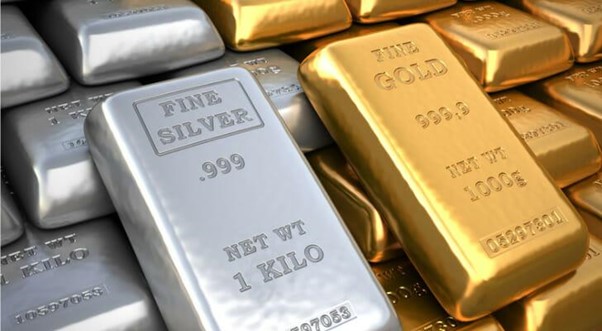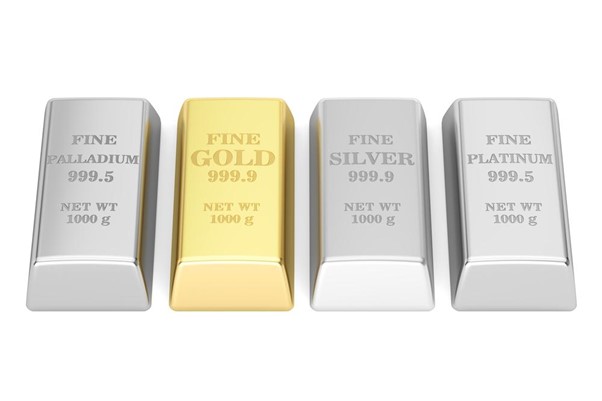
Precious metals investing is a popular way to diversify an investment portfolio. Precious metals are physical assets that can protect from market volatility.
They also have industrial uses, making them valuable in their own right. In this guide, we’ll look at the different types of investments available and the pros and cons of investing in precious metals.
We’ll also give you some tips to help you choose a quality investment company.
What Are The Different Types Of Investments?
Stocks
Stocks are one of the most popular investment options, and they are considered long-term investments.
When you purchase stocks or shares, you become a fractional owner of the company that issued the stock. Stocks provide an opportunity to participate in a company’s growth and prosperity.
Owning stocks is also considered a high-risk investment because stock prices are volatile and subject to market fluctuations. However, stocks offer potential gains and dividends over the long run.
Bonds
Bonds are debt securities that companies, governments, and other organizations issue to raise capital. When you invest in bonds, you are essentially lending money to the issuer for a fixed period at an agreed-upon rate of interest.
Bonds provide more stable returns than stocks as they are less volatile. In general, bonds are considered a low-risk investment option, especially for retirees or investors looking for fixed income from interest.
Mutual Funds
A mutual fund is a type of investment that pools money from multiple investors to purchase stocks, bonds, and other securities. Mutual funds are managed by professional fund managers and can offer instant diversification even for small investments. Diversification protects against market risks because the funds’ holdings are spread over many different positions.
Mutual funds are ideal for investors who want to invest in stocks but lack the expertise to make their own investment choices.
Exchange-Traded Funds (ETFs)
An ETF is a type of investment that trades on the stock exchange, like stock shares. ETFs have a similar objective to mutual funds. They offer diversification within a particular investment category, but instead of mutual fund managers, ETFs often mirror investment indexes.
ETFs are attractive because they offer access to a wide range of investment choices, with lower fees than traditional mutual funds.
Real Estate
Real estate investing allows investors to purchase and own property, such as a house, condo, or commercial property. Real estate property is an excellent option for people looking to build long-term wealth through property appreciation and rental income. However, real estate is a high-cost investment option that requires substantial capital, patience, and management.
Commodities
Commodities are investment options that involve non-tangible items such as precious metals and oil. This type of investment is popular for its diversifying qualities.
Commodities have a limited supply, which means supply shocks can create unusual price movements. While trading in commodities can be very risky, it can often be a good hedge against inflation.
Precious Metals
Precious metals tend to hold their value when investors flock to safety during times of economic uncertainty. Precious metals are usually volatile, but they have been known to retain their value through war, natural disasters, and other economic calamities.

Pros and Cons of Investing in Precious Metals
Investing in precious metals can come with both risks and rewards. On the plus side, precious metals are a tangible asset that can provide insulation from market volatility.
They also tend to hold their value over time, providing a hedge against inflation. On the downside, physical assets such as gold and silver coins or bars can be expensive to purchase and store securely.
Also, their prices can fluctuate significantly depending on external factors such as political and economic events.
Strategies for Investing in Gold, Silver, and Platinum
When investing in precious metals, diversification is key. You should consider allocating a portion of your portfolio to each metal: gold, silver, and platinum.
For instance, you can buy physical coins or bars or invest in paper assets such as futures, ETFs, and stocks. You can also diversify your portfolio by investing in different types of coins or bar sizes.
Diversifying Your Portfolio With Precious Metals
You should also consider diversifying beyond just gold, silver, and platinum. Other precious metals that are commonly traded include palladium and rhodium. These metals may offer unique opportunities, depending on their supply and demand.
Tips For Choosing A Quality Investment Company
When selecting an investment company to handle your precious metal investments, it’s important to do your research.
Look for a company with a good track record and customer reviews. You should also make sure they have competitive prices and a wide selection of products.
Additionally, it’s important to ensure that the company is properly insured and that they have secure storage facilities for your physical assets. We recommend Beverly Hills Precious Metals Exchange, one of the most common and known precious metal exchange company in the US. Learn more about the company by reading Beverly Hills Precious Metals Exchange reviews from trusted investment companies.
Conclusion
Precious metals investing can be an effective way to diversify your portfolio. However, it’s important to understand the different types of investments available and the pros and cons of each.
It’s also important to choose a quality investment company and ensure that your physical assets are stored securely.
With the right strategies in place, precious metals investments can help to reduce risk while providing potential growth opportunities for your portfolio.
Learn more.